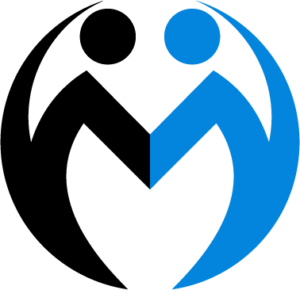Medela Rehabilitation offers the best complete shoulder injuries treatment in Abbotsford at an affordable price. Shoulder pain is one of the most common reasons people visit the clinic, and it can be extremely debilitating, causing you to miss out on your gym workouts. We treat a lot of gym-goers, so we have a good understanding of gym injuries. In the worst-case scenario, you may need to completely stop lifting weights and rest the injury. It’s crucial to figure out what’s wrong with your shoulder before deciding how to treat it. When you know this, you’ll be able to figure out exactly what you can do in the gym to avoid aggravating your pain while also improving your form.
These are the most common shoulder injuries we see in the clinic in order of frequency:

1) Shoulder impingement
Shoulder impingement syndrome is caused by the rotator cuff rubbing against the humerus and the top outer edge of your shoulder in a vicious cycle. The rubbing causes swelling and a narrowing of the space, resulting in pain and irritation. Rest, ice, anti-inflammatory medications, physical therapy, cortisone injections, and surgery are all options for treatment.
Causes can include repetitive pushing motions like push-ups, bench press, overhead press, lateral and front raises, dips, lat pulldowns, and chin-ups. Instability in the shoulder girdle, muscle imbalances (tightness in the pectoralis major and minor pulling the scapula forward, weakness in the stabilizes and the rhomboids mid trapezius), winging scapula, or poor posture are all common causes of pain when performing these actions.
It’s crucial to have good form, set the shoulders, and make sure the shoulder doesn’t come forward when lifting because this forward movement causes the humerus to come into a position where the tendon can get pushed up against the acromion.
Poor posture Sitting at a desk can also cause shoulder impingement because if your shoulders are forward and rounded, your humerus will pinch against the acromion when you lift your arm above your head. Try it out for yourself. Slump your shoulders forward and try to lift your arm above your head, to the side, or in front of you. You should notice a pinching sensation in your shoulder. If your shoulders are forward and you’re lifting weights above your head, the tendons and other soft tissues against the acromion will be constantly pinched.
Stretching out the chest, concentrating on having the shoulders set (back and down), and working on shoulder stability exercises are your best bets for recovering from shoulder impingement and preventing it in the first place.
The acromion, like a bone spur, can become hooked as we age, narrowing the space in the shoulder joint and putting more pressure on the supraspinatus tendon. As a result, after the age of 40, we are much more likely to develop a shoulder impingement and must exercise greater caution when using our shoulders, particularly when lifting over our heads.
2) Rotator cuff tear
A tear in the rotator cuff tendon can cause pain in the shoulder. The pain is usually felt on the side of the shoulder joint. Trauma to the rotator cuff muscles, such as falls onto an outstretched arm or shoulder, can cause a tear. When lifting something heavy, you will usually feel your shoulder “go.” This usually manifests as a dull ache in the back/side of the shoulder, accompanied by pain when moving above the head or rotating the shoulder.
Improvement of posture, form, stability of the shoulder and releasing tension in the soft tissues can help this injury recover.
3) Long head biceps tendonitis
The long head tendon of the biceps brachii muscle is frequently the source of pain in the front of the shoulder. The biceps tendon attaches to the labrum and runs up into the bicipital groove of the humerus and into the shoulder joint.
Avoiding heavy bench presses, and especially deep bench presses will help prevent biceps tendonitis from worsening. It’s important to maintain good shoulder stability and avoid rounding your shoulders to avoid aggravating the biceps tendon.
Other more chronic shoulder injuries
Subacromial Bursitis
Overuse can lead the bursa to become inflamed. “itis” means inflammation so Bursitis is inflammation of the bursa. There are multiple bursae in the shoulder such as the subacromial bursa, sub-deltoid bursa, subcoracoid bursa, and subscapularis bursa. If you have had pain in the shoulder for a long period of time then this may be bursitis. The most common bursitis in the shoulder is subacromial bursitis. This lives between the supraspinatus (rotator cuff) tendon and the acromion. Usually, a scan on the shoulder will show bursitis. Bursitis is also more common in people over the age of 40.
Labral Tear
The labrum is a cartilage cup that sits inside the shoulder socket (glenoid fossa). It allows the ball of the humerus to join in a deeper joint. The labrum also gives the joint some cushioning. Overuse, especially with overhead weights, can harm the labrum.
As you can see, the majority of these shoulder injuries have similar pain symptoms. Shoulder impingement injuries are much easier to treat and have better treatment outcomes than shoulder bursitis injuries. The most important aspect of getting better is receiving the proper diagnosis and treatment.

